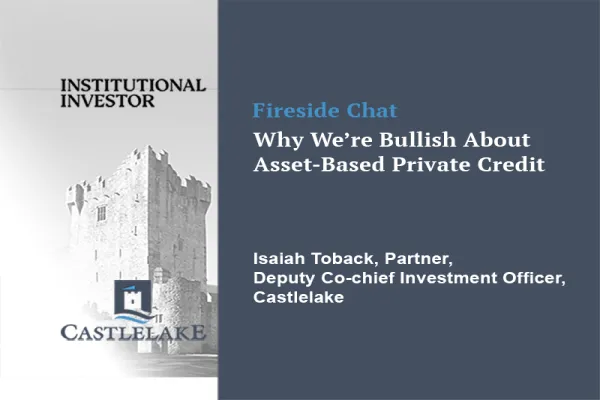Since market leader Barclays Global Investors filed for the iShares Silver Trust nine months ago, both the pro- and anti-ETF forces have mustered some substantial, and some less substantial, arguments on either side. Neal Wolkoff, chairman and CEO of the American Stock Exchange, where the silver ETF is to be listed – the first new listing, it should be noted, on the Amex by BGI since Barclays decided to yank 81 ETFs from the Amex last summer – argued forcefully in favor of the fund.
"The listing and trading of the Silver Shares will benefit the marketplace by providing greater liquidity and investor choice," he wrote in a Feb. 28 comment letter. "We fervently believe that a product's potential success should be based on the performance in the marketplace rather than any potential or hypothetical concerns of a small number of commentators motivated by their own commercial interests."
Those commentators, led by the Silver Users Association, which represents members that it says process 80% of the silver used in the U.S., have argued that the silver market is too illiquid to support the demands of ETF (each share will represent 10 ounces, initially), and that a resulting scarcity of silver could force job cuts. David Karsbøl, a market analyst with Denmark's Saxobank, doesn't buy that argument, saying "even if prices double or treble from here, most users will probably buy the same amount of silver, because it will have no impact on the final price of the goods they are producing." But he acknowledges that there's not a lot of silver floating around in the market. "It's not really possible to increase the supply of silver very much.... We're seeing a very tight physical market."
Last week, the Securities and Exchange Commission – which received 255 comment letters on the proposed ETF – sided with the pro-ETF forces, approving the Amex's rule change allowing the ETF to trade. "The Amex is glad to see the SEC make an important step toward making the iShares Silver Trust available to the public," Cliff Weber, the exchange's senior v.p. for the ETF marketplace, said. Both the Amex and BGI caution that the ETF has not yet cleared the final hurdle. "We remain in a quiet period while the SEC reviews BGI's iShares Silver Trust filing," explains BGI spokeswoman Christine Hudacko. "No launch date can be determined yet." Still, given the SEC's decision on the Amex's rule change, and the tone of that decision, most commentators say the eventual approval of the ETF is a fait accompli.
The silver iShare would be structured in the same way as BGI's iShares Gold Trust, as a commodity-based trust shares security – not technically an ETF, but traded in the same way. Initially, the Amex is expected to list 150,000 shares, requiring 1.5 million ounces of silver, though the registration statement's mention of 130 million ounces, approximately the amount held by the New York Mercantile Exchange's COMEX division, was enough to raise the eyes – and ire – of industrial users of silver. The fact that silver prices remain near a 22-year-high, thanks partly to the speculation surrounding the BGI offering, hasn't helped.
So, in the wake of the SEC decision, what of the doom and gloom scenarios?
Paul Mazzilli, an analyst and ETF expert with Morgan Stanley, has his doubts. "I think [the impact] is overstated. [The silver ETF] may have some more impact than gold, because gold's a much bigger market, but I also don't think this ETF will be as big as the gold ETF."
ETF opponents certainly hope he's right. Paul Miller, the executive director of the SUA, thinks transparency arguments helped carry the day for the Amex. "It's kind of what we're dealing with in Washington; folks don't think there's enough transparency in anything right now," he says. "Some folks in the general public are more radical and continuously send the SEC notes that say, 'The SUA is manipulating the silver market,' and it's just not true and not factual. The SEC, in its review, decided that this might be a way to put some of those concerns or fears to rest."
Karsbøl sees in that an effective strategy. "We've seen a lot of conspiracy theories that the short side of the market has been able to trigger sell-offs, just by dumping naked contracts on the market," he says. "If that were true, you could have bought silver and demanded delivery, calling the naked shorts. That's pretty close to what's happening now with the silver ETF." All told, Karsbøl says the proposed fund is great for the silver market, calling it "a tremendously positive development."
"Gold costs 55 to 60 times more than silver," he says. "It doesn't make any sense to me that that should be the case," given the relative scarcity of silver. "Everything else being equal, [the ETF] should be positive for the price of silver."
Tom Szabo, the editor-in-chief of the blog SilverAxis.com, says he doesn't buy the conspiracy theories, either, but says, "the silver market isn't very transparent. The spot market has virtually no information in it. Yes, there's ongoing spot price indications and London and New York fixes, but really, who knows how much silver is out there?"
Plans for a silver-backed exchange-traded fund on the London Stock Exchange have added another dimension to the controversy. Rather than actually holding physical silver, as the iShares product will, the proposed offering from ETF Securities will track the price of silver with third-party-backed contracts, much as it does for its London-listed oil ETF, Oil Securities. BGI, citing the quiet period, would not comment on the decision to use silver rather than futures.
Though he acknowledges that "some have raised concerns about that, too," the SUA's Miller says, "from our standpoint, that might have been a better approach here in the United States, not actually asking people to hold such large amounts of physical silver." That way, he says, by not tying up such a large inventory of the metal, the impact on jobs – his group's longstanding argument against the ETF – would be muted.
Mazzilli also has his doubts. "The bullion is cleaner, it doesn't have counterparty risk, and it also has a better tax treatment," he argues. "It's a cleaner, safer and simpler product if they can do it without the futures." Szabo agrees, saying that such a product "is really, in effect a collateralized obligation" that "still bears credit risk," as opposed to holding the physical commodity.
Szabo sees three ways the Silver Shares listing could play out. First, it could be as bad as the SUA and its opponents say, causing a big disruption in the silver market. Second, front-running could run silver prices up so high that it dampens enthusiasm for the fund. Finally, "there's a possibility that it's going to be a dud," he says. "It's very possible that this is all a big deal about nothing, and there really isn't that much pure demand out there to make a huge amount of difference."
The disappointed Miller certainly hopes so. "Hopefully, our conclusion in our statements were wrong and this won't have an impact," he says. "But nobody knows that right now."




